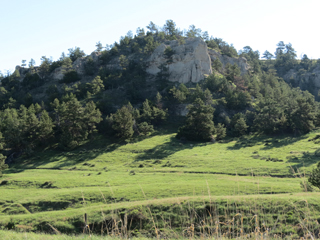Spring Meeting: Fort Robinson State Park - Crawford 5/29/2026 - 5/31/2026
Details
Birding in Nebraska
 © Janis Paseka
© Janis Paseka
 © Kathy DeLara
© Kathy DeLara
There are so many wonderful birds and bird habitats in Nebraska that a single lifetime isn't nearly long enough to enjoy them all. Nebraska’s Platte Valley annually hosts the world's largest crane concentration, and also is the most frequent stopover-point for migrating Whooping Cranes. Our Sandhills region of grassy dunes and wetlands hosts many endemic prairie birds, including both Greater Prairie-Chickens and Sharp-tailed Grouse. Our western Pine Ridge country is a miniature Rocky Mountain ecosystem, with many western songbirds and raptors. The Missouri Valley forests ring each spring and summer with the voices of eastern warblers, tanagers, and flycatchers. Like two clear blue ribbons, the Niobrara and Platte rivers connect both ends of the state and provide the meeting grounds for several species of eastern and western birds. What more could a bird-lover want in a state?
Dr. Paul A. Johnsgard, Professor Emeritus, University of Nebraska-Lincoln
Not a member of Nebraska Ornithologists' Union?
There is a reason the Peterson guides used the 100th meridian, which dissects Nebraska, as the change from eastern to western species.
Nebraska has an active birding community involved in regular activities like seasonal surveys as well as regional festivals.
Join our mail group to discuss recent sightings, identification questions, and other topics of general interest to Nebraska birders.